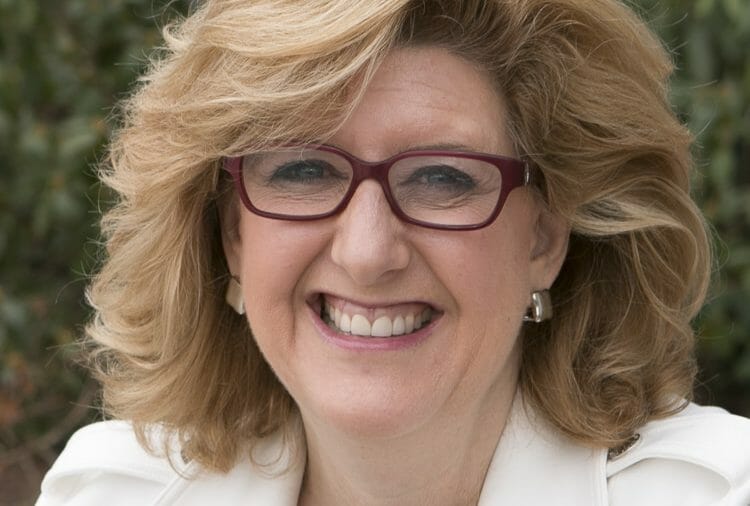Great businesses align their people strategy with their business strategy for optimal results. But if your senior leaders aren’t also aligned with the company’s core values (i.e., the behaviors your organization needs to succeed), your employees won’t be either.
Senior leadership team dynamics are important to talent optimization.
Senior leadership teams deal with behavioral similarities and differences and work together to achieve a common goal, just like any other team.
The big difference is all eyes are on the senior leaders, and behaviors trickle down from the top. Employees look to executives to set the tone when it comes to culture, rewarded behaviors, and teamwork. This is why senior leaders must become fluent in talent optimization: You can’t outsource setting a good example.

What does a talent-optimized executive team look like? Here are four habits of effective senior leadership teams:
1. They consider the senior team as a mini-organization.
The executive team is like a project team, with its own objectives and team dynamics.
What are you trying to accomplish as an executive team? Those objectives should lend themselves to behaviors required for success (e.g., if your leadership team needs to spearhead change, you’ll need to innovate and take risks). Assess your current leadership team to determine alignment between each individual and your desired behavioral traits.
Consider how your current team dynamic might support or hinder those efforts. If, for example, some of your leaders are wired to innovate while others are wired to create process, you would likely end up with competing goals. These competing goals could create conflict, inhibiting results. By aligning on objectives and behaviors required for success, senior leaders can put aside personal preferences to focus on supporting the business strategy. For some, this might mean stretching outside their natural behavioral tendencies (e.g., a process-oriented executive might move at a faster-than-normal pace to support the organization’s goal of rapid growth).
2. They create awareness of senior team member similarities and differences.
Your senior leadership team needs to present a united front. Conflict amongst team members can ripple out and impact the entire organization.
A main cause of interpersonal conflict is behavioral differences. Senior leaders can create awareness around behavioral similarities and differences by leveraging people data (e.g., behavioral assessments).
With this people data in hand, senior leaders can pinpoint potential problem areas between team members and proactively work to address them. For example, if most of the team is highly extraverted but one member of the team has low extraversion, that team member could stretch to make sure they’re heard during meetings—or the rest of the team could create an opportunity for that person’s voice to be heard. (“John, what are your thoughts on this subject?”)
The goal isn’t a leadership team that’s wired to behave the same across the board. That can lead to groupthink, less creativity, and over-exaggerated weaknesses. Behavioral differences provide balance. The key is to negotiate differences so everyone can do their job well. For example, an executive who’s wired to protect the company from risk might need to become more willing to take on calculated risk. An executive who’s wired to take risks and move quickly might need to slow down a little to take more thoughtful risks.
3. They monitor and manage team culture.
Culture has to start from the top down. It’s not something to relegate to HR or something executives are exempt from. The senior leadership team has to be intentional in modeling the company culture.
How the executive team works together as a unit will inform how other teams work together as a unit. For example, if the CEO’s ideas reign supreme on the executive team—as compared to a model where all executives’ opinions weigh equally—this behavior will trickle down to project teams. Team leads’ decisions will override collaborative decision making. If your organization requires more collaboration, your leadership team should be modeling this behavior.
4. They create flexibility and the ability to adapt to change.
The modern work environment gets disrupted very quickly with new competitors, new technology, and changing market conditions. This increased volatility demands more flexibility from organizations.
The key to flexibility is a growth mindset, which is the belief that basic abilities can be developed through dedication and hard work. This is the opposite of a fixed mindset, or a belief that you’re born with—and limited to—a certain amount of talent or ability.
For business leaders, a growth mindset means:
Not pigeonholing people
As a leader, you need to believe your employees are capable of stretching themselves beyond how they’re wired to behave. You can achieve this through opportunities for cross-training and cross-functional work.
Being willing to learn and grow
Learning shouldn’t stop because you’ve reached the C-Suite. It’s critical you continue to learn and grow to be most effective in your role and to model that behavior for others.
At the heart of great leadership teams is self-awareness.
When your leadership team understands what drives them at work—and what drives those around them—individual and team productivity blooms. This then trickles down to the rest of your organization and paves the way for success.
Join 10,000 companies solving the most complex people problems with PI.
Hire the right people, inspire their best work, design dream teams, and sustain engagement for the long haul.


